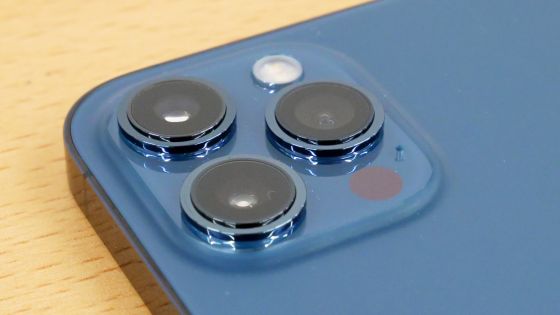What is 'Metalenz' that achieves optical performance that surpasses conventional camera lenses for smartphones with just one lens?

Harvard University-based venture company
A new lens technology is primed to jumpstart phone cameras | Ars Technica
https://arstechnica.com/gadgets/2021/02/a-new-lens-technology-is-primed-to-jumpstart-phone-cameras/
The first iPhone, which appeared in 2007, was equipped with a camera that could take 2MP pictures . Since then, the camera performance of smartphones has improved, and the ' Galaxy S21 Ultra ' announced by Samsung in January 2021 is equipped with a camera that can take high-definition pictures of 108 MP. In addition to the hardware, the performance of software such as HDR processing in situations where there is a large difference in brightness and noise reduction processing in dark places has also been greatly improved.
Professional photographer uses the camera of 'iPhone 12 Pro' to review, experience both advanced software and hardware --GIGAZINE

However, while the performance of the image sensor and software of the camera for smartphones has improved as described above, there has been no technological innovation regarding the performance of the lens. 'Smartphone optics have been refined by adding more lenses and adopting aspheric lenses, but the last decade has revolutionized,' said Oliver Cinderbeck, Innovation Manager at

Metalenz, founded in 2017 by Robert Devlin, who was researching the '

The lens developed by Metalenz is said to be equipped with millions of circular nanostructures of several nanometers. 'General curved lenses refract light by accelerating and decelerating it. The lenses developed by Metalenz have individual nanostructures that refract light in the same way as conventional lenses,' said Devlin. It also has a function. By combining nanostructures of various diameters, it is possible to correct light aberration and image distortion in the same way as combining multiple curved lenses. ' I will.
The lens developed by Metalenz is said to be able to take pictures with the same image quality as a camera system using a conventional lens with one lens. As a result, Devlin claims that the size of the camera module can be reduced. In addition, Mr. Devlin said, 'Metalenz lenses deliver more light to the image sensor than conventional lenses, so you can take bright pictures. It is also used in Apple's face recognition technology

Metalenz has already signed contracts with two semiconductor manufacturers, and plans to start production of camera modules equipped with lenses developed by Metalenz by the end of 2021.
Related Posts:







